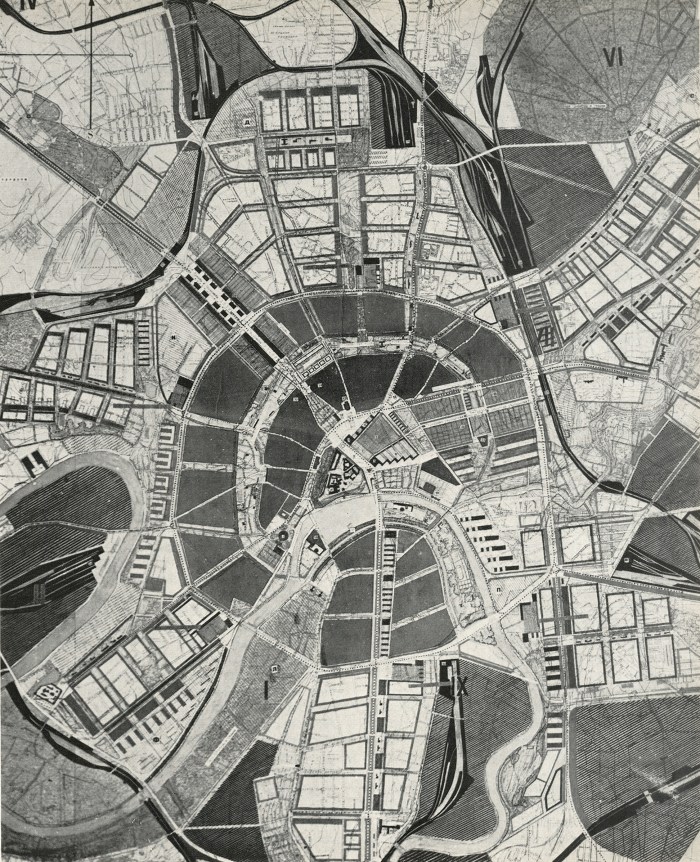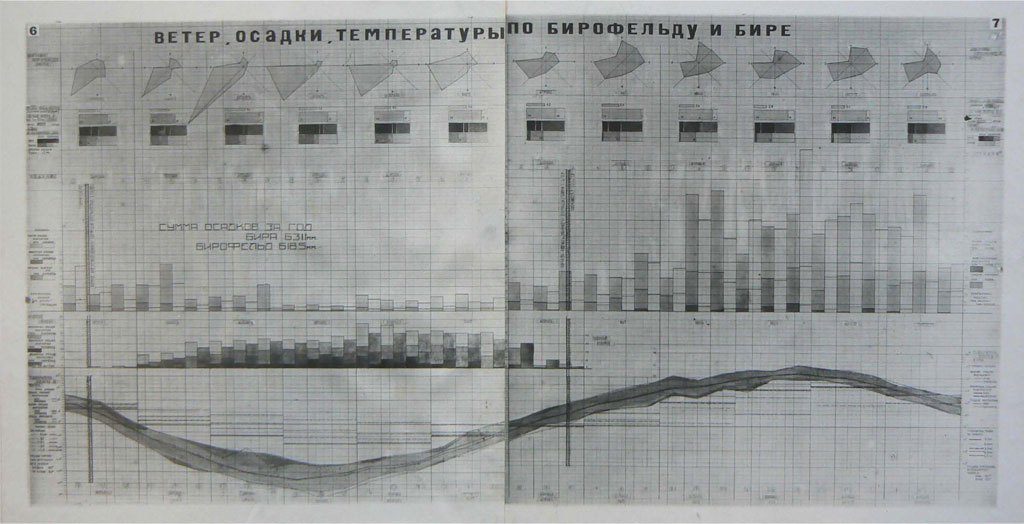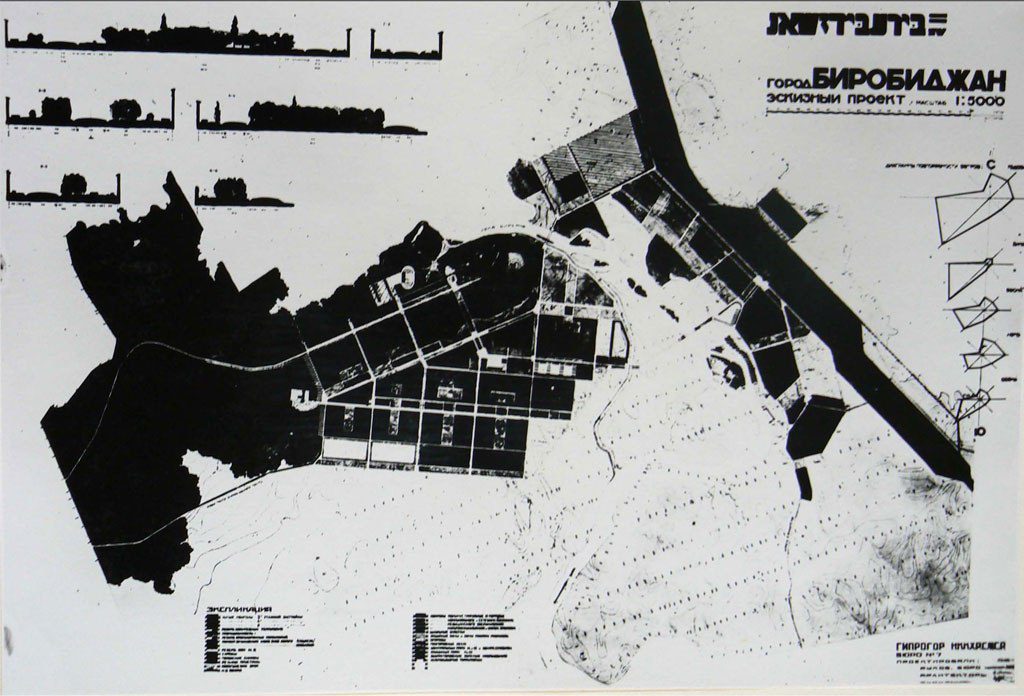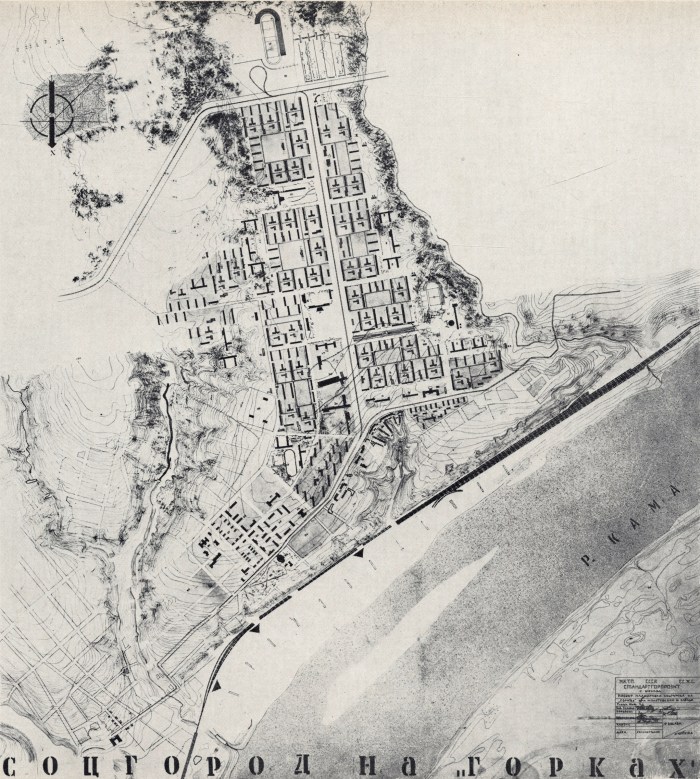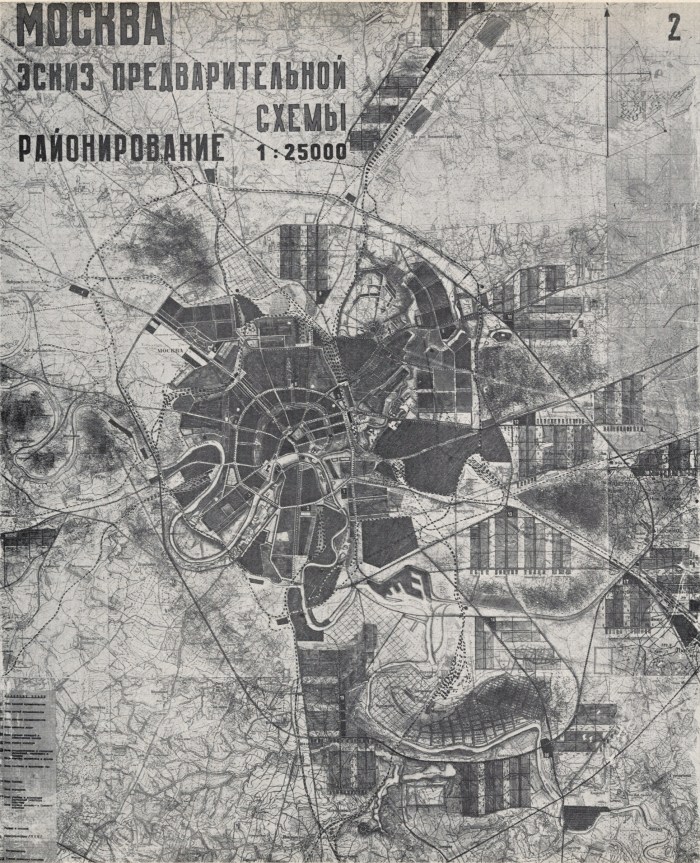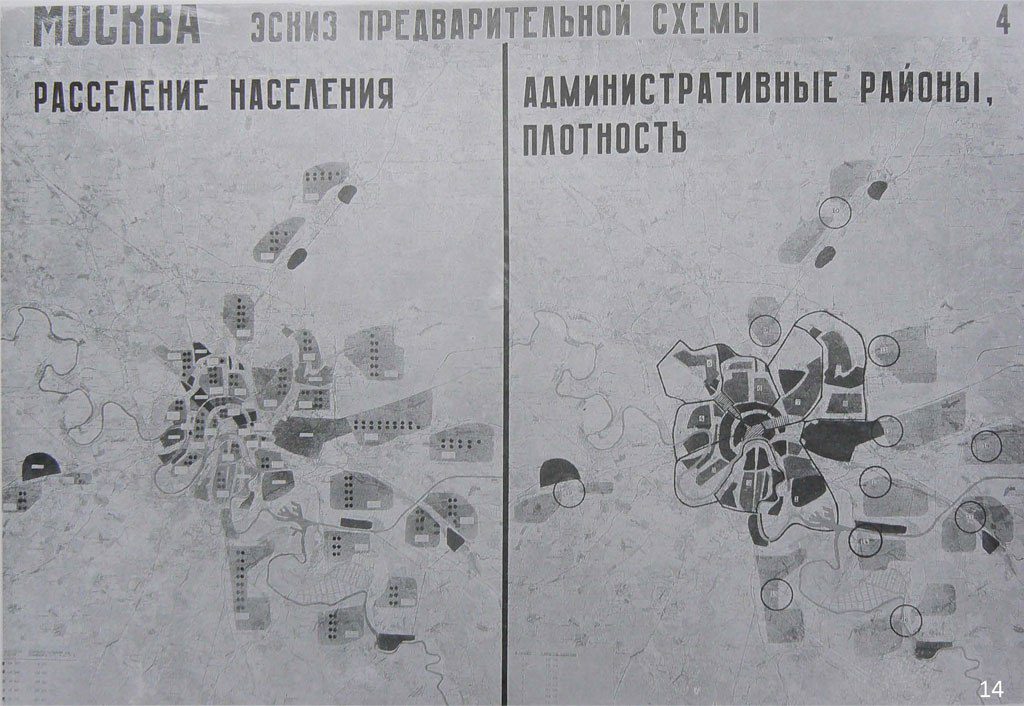“After many years of working within the capitalist system I am convinced that working under such conditions is quite senseless. In view of our Marxist and revolutionary conception of the world we, revolutionary architects, are at the mercy of the insoluble contradictions of a world built on animal individualism and the exploitation of man by man. I have said, and I say again, to all architects, all engineers, all builders: ‘Our way is and must be that of the revolutionary proletariat, that of the communist party, the way of those who are building and achieving socialism.’ I am leaving for the USSR to work among people who are forging a true revolutionary culture, who are achieving socialism, and who are living in that form of society for which we have been fighting here under the conditions of capitalism.
“Después de muchos años de trabajo dentro del sistema capitalista, estoy convencido de que trabajar bajo tales condiciones es absolutamente insensato. En vista de nuestra concepción marxista y revolucionaria del mundo, nosotros, los arquitectos revolucionarios, estamos a merced de las insolubles contradicciones de un mundo construido sobre el individualismo animal y la explotación del hombre por el hombre. He dicho y digo de nuevo a todos los arquitectos, a todos los ingenieros, a todos los constructores: “Nuestro camino es y debe ser el del proletariado revolucionario, el del partido comunista, el camino de quienes construyen y logran el socialismo”. Me voy a la URSS a trabajar entre personas que están forjando una verdadera cultura revolucionaria, que están logrando el socialismo, y que viven en esa forma de sociedad por la que hemos estado luchando aquí bajo las condiciones del capitalismo.
I beg our Russian comrades to regard us, my group and myself, not as heartless specialists, claiming all kinds of special privileges, but as fellow workers with comradely views ready to make a gift to socialism and the revolution of all our knowledge, all our strength, and all the experience that we have acquired in the art of building.”
I beg our Russian comrades to regard us, my group and myself, not as heartless specialists, claiming all kinds of special privileges, but as fellow workers with comradely views ready to make a gift to socialism and the revolution of all our knowledge, all our strength, and all the experience that we have acquired in the art of building.”
Ruego a nuestros camaradas rusos que nos consideremos a mí, a mi grupo y a mí, no como especialistas sin corazón, reclamando todo tipo de privilegios especiales, sino como compañeros de trabajo con puntos de vista dispuestos a hacer un regalo al socialismo y a la revolución de todo nuestro conocimiento, toda nuestra fuerza, y toda la experiencia que hemos adquirido en el arte de construir.”
Hannes Meyer, Pravda, 10th October, 1930
ON MARXIST ARCHITECTURE – 1931
1. Architecture is no longer the art of building. Building has become a science. Architecture is building science.
1. La arquitectura ya no es el arte de construir. La construcción se ha convertido en una ciencia. La arquitectura es la ciencia del acto de construir.
2. Building is not a matter of feeling but of knowing. Hence building is not an act of composition dictated by feeling. Building is an act of premeditated organization.
2. Construir no es una cuestión de sentir sino de saber. Por lo tanto construir no es un acto de composición dictado por el sentimiento. Construir es un acto de organización premeditada.
3. The architect is the organizer of the building sciences. He is not himself a scientist in the strict sense of the word.
3. El arquitecto es el organizador de las ciencias de la construcción. Él no es un científico en el sentido estricto de la palabra.
4. Since building is a process of organization, the strictly scientific structure of the socialist planned economy can alone afford an opportunity for organized architecture to develop in its highest form.
4. Puesto que construir es un proceso de organización, la estructura estrictamente científica de la economía planificada socialista puede por sí sola permitir una oportunidad para que la arquitectura organizada se desarrolle en su forma más elevada.
5. The rudiments of socialist architecture in a planned economy are composed of norms, types and standards. We make dimensional requirements conform to a norm so as to obtain a standard space and standard equipment. We organize these standardized elements to make up the standard organic architectural entities of practical socialist life.
5. Los rudimentos de la arquitectura socialista en una economía planificada se componen de normas, tipos y normas. Hacemos requisitos dimensionales conformes a una norma para obtener un espacio estándar y equipación estándar. Organizamos estos elementos estandarizados para conformar las entidades arquitectónicas orgánicas estándar de la vida socialista práctica.
6. As the socialist planned economy materializes in the sphere of building, the steady diminution of the multiplicity of standard elements (equipment, building elements ,spaces) is an indication of the steady socialization of life in the mass.
6. A medida que la economía planificada socialista se materializa en la esfera de la construcción, la disminución constante de la multiplicidad de elementos estándar (equipos, elementos de construcción, espacios) indica la socialización constante de la vida en la masa.
7. The final product of socialist building practice is never an isolated building but part of a productive or recreational centre in a sosgorod or agrocenter. These centers of work and recreation are, as organic architectural entities, the only final objectives of socialist architecture.
7. El producto final de la práctica de construcción socialista nunca es un edificio aislado sino parte de un centro productivo o recreativo en un sosgorod o agrocenter. Estos centros de trabajo y recreación son, como entidades arquitectónicas orgánicas, los únicos objetivos finales de la arquitectura socialista.
8. The building system of the socialist town is elastic, not rigid. The greater the elasticity of such centers of industry, housing, education, and recreation, the greater is the practical effect on the continuous process of socializing the life of the masses.
8. El sistema constructivo de la ciudad socialista es elástico, no rígido. Cuanto mayor es la elasticidad de tales centros de industria, vivienda, educación y recreación, mayor es el efecto práctico en el proceso continuo de socialización de la vida de las masas.
9. The artistic mission of proletarian architecture is to produce certain architectural solutions which lend themselves to the most varied manifestations of proletarian art; mass cinema, mass demonstrations, mass theatre and mass sport…The building itself is not a work of art. Its size is determined by the dimensions and functions of its program and not by the shallow pathos of any trimmings.
9. La misión artística de la arquitectura proletaria es producir ciertas soluciones arquitectónicas que se presten a las más variadas manifestaciones del arte proletario; Cine de masas, manifestaciones de masas, teatro de masas y deporte de masas … El edificio en sí no es una obra de arte. Su tamaño está determinado por las dimensiones y funciones de su programa y no por el pathos superficial de cualquier adorno.
10. The socialist building is neither beautiful nor ugly, it is perfect or imperfect, right or wrong. The result of a process of organization does not stand or fall by any aesthetic assessment.
10. El edificio socialista no es ni bello ni feo, es perfecto o imperfecto, correcto o errado. El resultado de un proceso de organización no resiste ni cae por ninguna evaluación estética …
11. In line with the Marxist maxim that “being determines consciousness” the socialist building is a factor in mass psychology. Hence towns and their buildings must be organized psychologically in keeping with the findings of a science in which psychology is kept constantly in the foreground. The individual sensibilities of the artist-architect must not be allowed to determine the psychological effect of the building. The elements in a building that have a telling psychological effect (poster area, loudspeaker, light dispenser, staircase, color, etc.) must be organically integrated so as to accord with our profoundest insights into the laws of perception.
11. En línea con la máxima marxista de que “el ser determina la conciencia”, la construcción socialista es un factor de la psicología de masas. Por lo tanto, las ciudades y sus edificios deben ser organizados psicológicamente de acuerdo con los resultados de una ciencia en la que la psicología se mantiene constantemente en primer plano. Las sensibilidades individuales del artista-arquitecto no deben permitir determinar el efecto psicológico del edificio. Los elementos de un edificio que tienen un efecto psicológico revelador (cartelería, altavoz, dispensador de luz, escalera, color, etc.) deben ser integrados orgánicamente de acuerdo con nuestros profundos conocimientos sobre las leyes de la percepción.
12. Socialist architecture calls for a radical change in the teaching of building. The socialist theory of architecture is a science which introduces into the building process the Marxist laws and the ideology of the proletariat. Out, then, with the doctrine of composition prompted by the emotions! In, then, with the doctrine of organization as dictated by the reason! The socialist doctrine of building must teach aspirants to the profession of architect the rudiments of the art in the form of a doctrine of standardization embracing technical, economic and social standards, types and norms. It must enable the student to analyze the processes of life and teach him to give organic unity to this knowledge in the building.
12.La arquitectura socialista exige un cambio radical en la enseñanza de la construcción. La teoría socialista de la arquitectura es una ciencia que introduce en el proceso de construcción las leyes marxistas y la ideología del proletariado. ¡Fuera, entonces, con la doctrina de la composición provocada por las emociones! ¡Adelante, pues, con la doctrina de la organización según lo dictado por la razón! La doctrina socialista de la construcción debe enseñar a los aspirantes a la profesión de arquitecto los rudimentos del arte en forma de una doctrina de estandarización que abarque normas, tipos y normas técnicas, económicos y sociales. Debe permitir al alumno analizar los procesos de la vida y enseñarle a dar unidad orgánica a este conocimiento del oficio constructivo.
13. Following all this, the role of the architect in the socialist reconstruction is clear. The Leninist architect is not an aesthetic lackey and, unlike his colleague in the West, not a lawyer and custodian of the interests of the capitalist ruling class there. His opportunity to collaborate in socialist building is not an opportunity to prostitute his own private complexes of wishful emotions. The Leninist architect is an organizational assistant in the economically planned building process of socialist society. A building, whatever its kind, is for him an impersonal work whose structure is determined by mass requirements, norms, types and standards. It is typical of his work to rationalize means and processes and to avoid as far as possible the use of materials in short supply. He avoids deviating leftwards to the utopian project and rightwards to modernism and classicism. He strives constantly and with scientific objectivity to introduce the latest results of research into the process of building. Revolutionary elasticity and scientific objectivity are the hallmarks of the Leninist architect. For him architecture is not an aesthetic stimulus but a keen-edged weapon in the class struggle.
13. Después de todo esto, el papel del arquitecto en la reconstrucción socialista es claro. El arquitecto leninista no es un lacayo estético y, a diferencia de su colega en Occidente, no es abogado y custodio de los intereses de la clase dominante capitalista. Su oportunidad de colaborar en la construcción socialista no es una oportunidad para prostituir sus propios complejos privados de emociones de deseo. El arquitecto leninista es un asistente de organización en el proceso de construcción económicamente planeado de la sociedad socialista. Un edificio, cualquiera que sea su tipo, es para él una obra impersonal cuya estructura está determinada por las exigencias masivas, las normas, los tipos y estándares. Es típico de su trabajo racionalizar medios y procesos y evitar en la medida de lo posible el uso de materiales escasos. Evita desviarse hacia la izquierda hacia el proyecto utópico y hacia la derecha hacia el modernismo y el clasicismo. Se esfuerza constantemente y con objetividad científica para introducir los últimos resultados de la investigación en el proceso de construcción. La elasticidad revolucionaria y la objetividad científica son las características del arquitecto leninista. Para él, la arquitectura no es un estímulo estético, sino un arma afilada en la lucha de clases.
Hannes Meyer, On Marxist Architecture. 1931
VIA:
The Charnel House
Cite:
“On Marxist Architecture”. Hidden Architecture
<http://www.hiddenarchitecture.net/>
